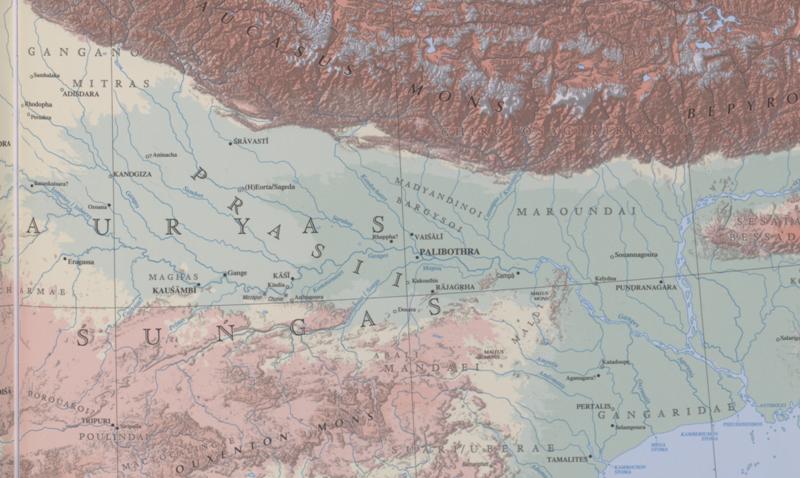
Tabula Peutingeriana – Einzelanzeige
| Toponym TP (aufgelöst): | Flumen Ganges |
| Name (modern): | Ganges |
| Bild: |  Zum Bildausschnitt auf der gesamten TP |
| Toponym vorher | |
| Toponym nachher | |
| Alternatives Bild | --- |
| Bild (Barrington 2000) |
 |
| Bild (Scheyb 1753) | --- |
| Bild (Welser 1598) | --- |
| Bild (MSI 2025) | --- |
| Pleiades: | https://pleiades.stoa.org/places/59822 |
| Großraum: | Indien |
| Toponym Typus: | Fluss |
| Planquadrat: | 11B2 + 11B5 |
| Farbe des Toponyms: | rot |
| Vignette Typus : | --- |
| Itinerar (ed. Cuntz): |
|
| Alternativer Name (Lexika): |
|
| RE: | Ganges [3] - https://elexikon.ch/RE/VII,1_705.png |
| Barrington Atlas: | Ganges fl. (6 E4) |
| TIR / TIB /sonstiges: |
|
| Miller: | Fl` Ganges |
| Levi: |
|
| Ravennat: | Ganges (p. 17.15) |
| Ptolemaios (ed. Stückelberger / Grasshoff): |
|
| Plinius: |
|
| Strabo: |
|
| Autor (Hellenismus / Späte Republik): |
|
| Datierung des Toponyms auf der TP: | --- |
| Begründung zur Datierung: |
|
| Kommentar zum Toponym: |
Kommentar (Talbert): |
| Literatur: |
Miller, Itineraria, Sp. 846f.; |
| Letzte Bearbeitung: | 04.11.2025 15:21 |
Cite this page:
https://www1.ku.de/ggf/ag/tabula_peutingeriana/einzelanzeige.php?id=2704 [zuletzt aufgerufen am 29.12.2025]